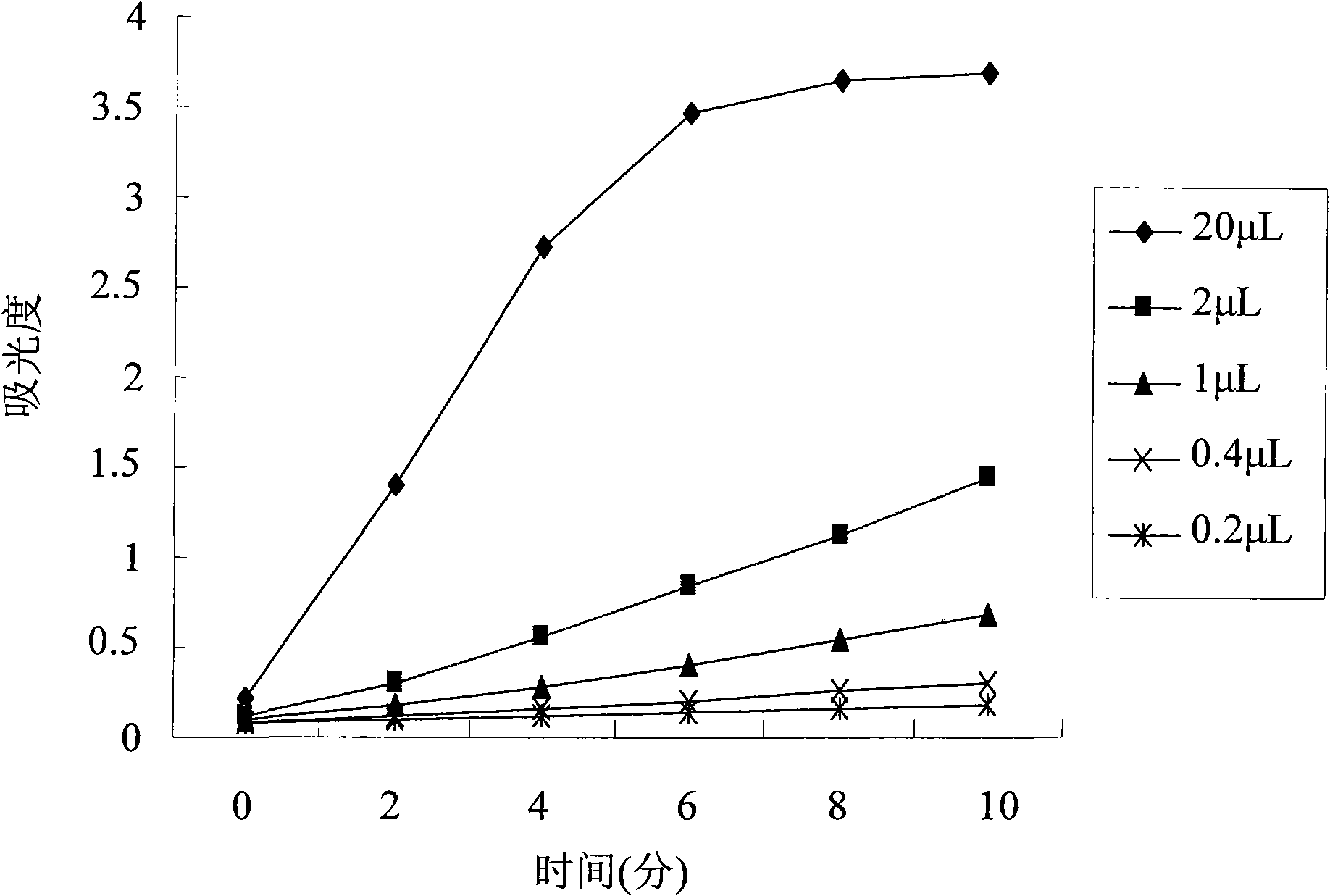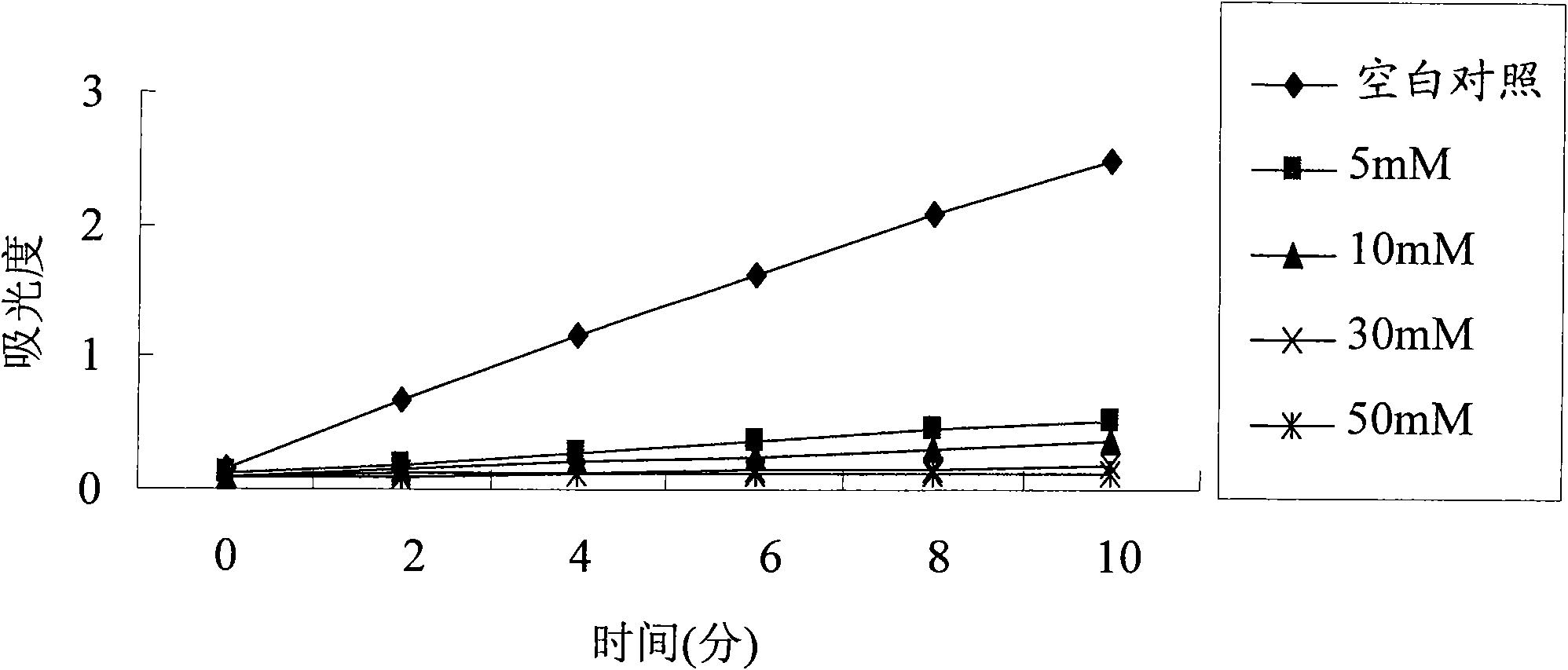Application of Beta-aminoketones compound in preparing drug for inhibiting isocitrate lyase
A technology of isocitric acid and amino ketone, which is applied in the direction of active ingredients of heterocyclic compounds, drug combinations, antibacterial drugs, etc., can solve the problems of easy relapse, long course of tuberculosis chemotherapy, poor curative effect, etc.
- Summary
- Abstract
- Description
- Claims
- Application Information
AI Technical Summary
Problems solved by technology
Method used
Image
Examples
preparation example Construction
[0109] One, the preparation general method of β-amino ketone compound
[0110]
[0111] Dissolve 20mmol of aromatic aldehyde and 20mmol of aromatic amine in 40-60mL of absolute ethanol, add a small amount of inorganic acid or Lewis acid as a catalyst, stir electromagnetically until solids are precipitated, then add 20mmol of aromatic ketone (when the aromatic ketone is nabumetone, Dissolve it in 5-20 mL of chloroform before adding it), adjust the pH to 4-5 with concentrated hydrochloric acid, continue to stir, and monitor with thin-layer chromatography (TLC) until the reaction reaches equilibrium or the reaction is complete. Stand overnight at ℃, filter with suction, wash the filter cake with water and ethanol in turn, drain and recrystallize to obtain β-aminoketone compounds.
Embodiment 1
[0112] Embodiment 1, ydcm01:1, the preparation of 3-bis(4-chlorophenyl)-3-(4-chloroanilino)propan-1-one
[0113]
[0114] Dissolve 2.8g (20mmol) of 4-chlorobenzaldehyde and 2.6g (20mmol) of 4-chloroaniline in 40mL of absolute ethanol, add a small amount of concentrated hydrochloric acid as a catalyst, stir electromagnetically until solids are precipitated, and then add 4-chlorophenylethyl Ketone 3.1g (20mmol), adjust the pH to 4-5 with concentrated hydrochloric acid, continue to stir, monitor with TLC until the reaction reaches equilibrium or the reaction is complete, the reaction solution is allowed to stand overnight at a temperature of 2-8°C, suction filtered, and the filter cake is watered in turn Washed with ethanol, drained, and recrystallized to obtain 6.93 g of the target product with a yield of 86%.
[0115] The structural characterization data of the product are as follows: IR (KBr, cm -1 ): 3407(s, v NH ), 1675 (vs, v C=O ), 1593 (vs, ), 1499 (vs, ), 815(s...
Embodiment 2
[0116] Example 2, ydcm07: Preparation of 1-(4-chlorophenyl)-3-(3,4-dichlorophenyl)-3-(4-bromoanilino)propan-1-one
[0117]
[0118] Dissolve 3.5g (20mmol) of 3,4-dichlorobenzaldehyde and 3.4g (20mmol) of 4-bromoaniline in 45mL of absolute ethanol, add a small amount of concentrated hydrochloric acid as a catalyst, stir electromagnetically until solids are precipitated, and then add 4- Chloroacetophenone 3.1g (20mmol), adjust the pH to 4-5 with concentrated hydrochloric acid, continue to stir, monitor with TLC until the reaction reaches equilibrium or the reaction is complete, the reaction solution is left standing overnight at a temperature of 2-8°C, suction filtered, filtered The cake was washed with water and ethanol in sequence, drained and recrystallized to obtain 8.08 g of the target product with a yield of 84%.
[0119] The structural characterization data of the product are as follows: IR (KBr, cm -1 ): 3398 (vs, v NH ), 1670 (vs, v C=O ), 1589 (vs, ), 1501 (vs,...
PUM
 Login to View More
Login to View More Abstract
Description
Claims
Application Information
 Login to View More
Login to View More - R&D
- Intellectual Property
- Life Sciences
- Materials
- Tech Scout
- Unparalleled Data Quality
- Higher Quality Content
- 60% Fewer Hallucinations
Browse by: Latest US Patents, China's latest patents, Technical Efficacy Thesaurus, Application Domain, Technology Topic, Popular Technical Reports.
© 2025 PatSnap. All rights reserved.Legal|Privacy policy|Modern Slavery Act Transparency Statement|Sitemap|About US| Contact US: help@patsnap.com



